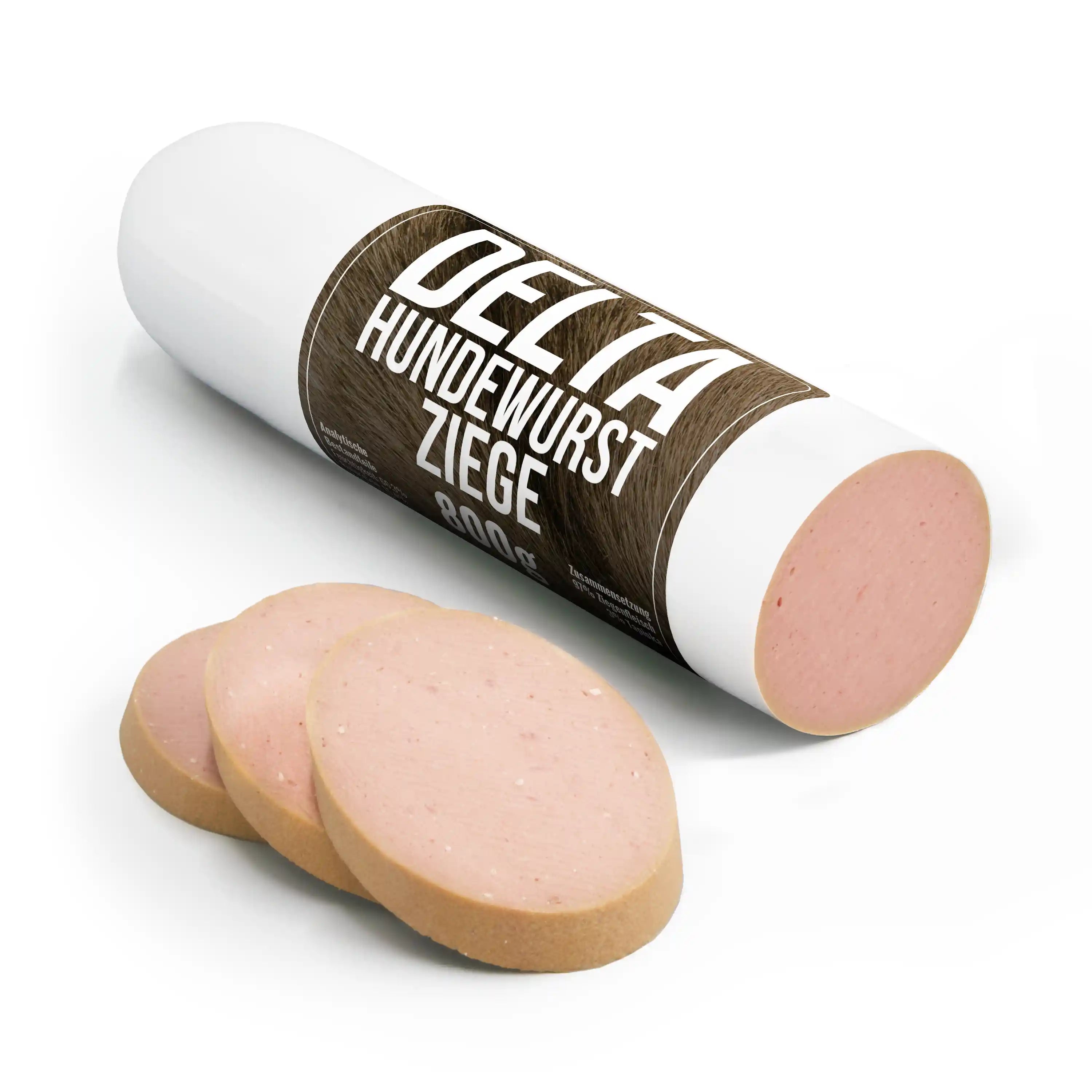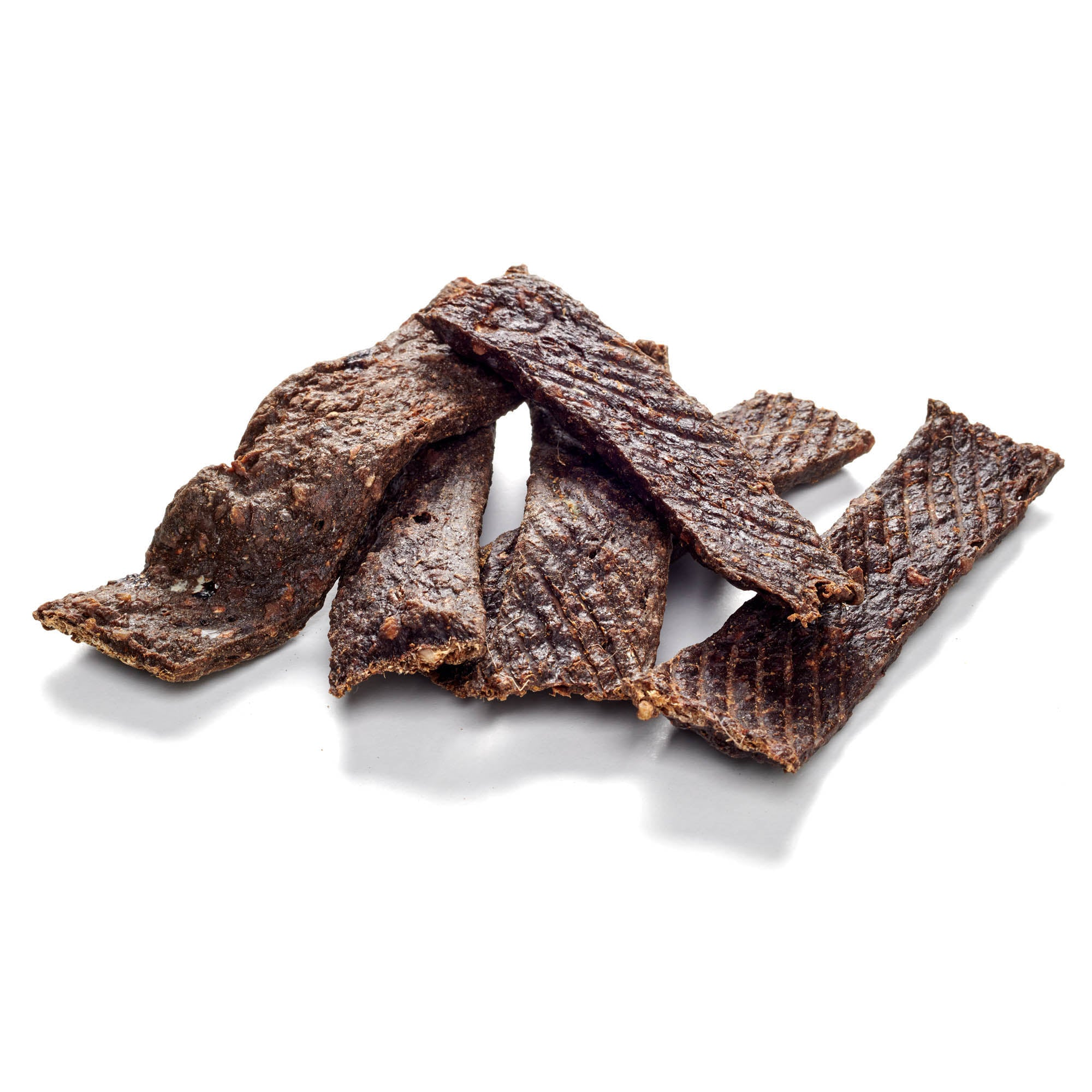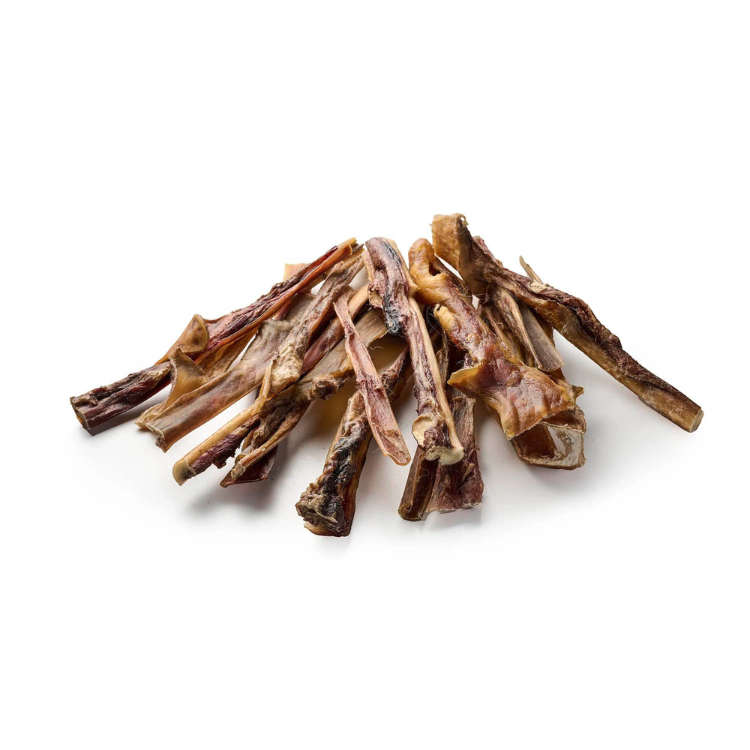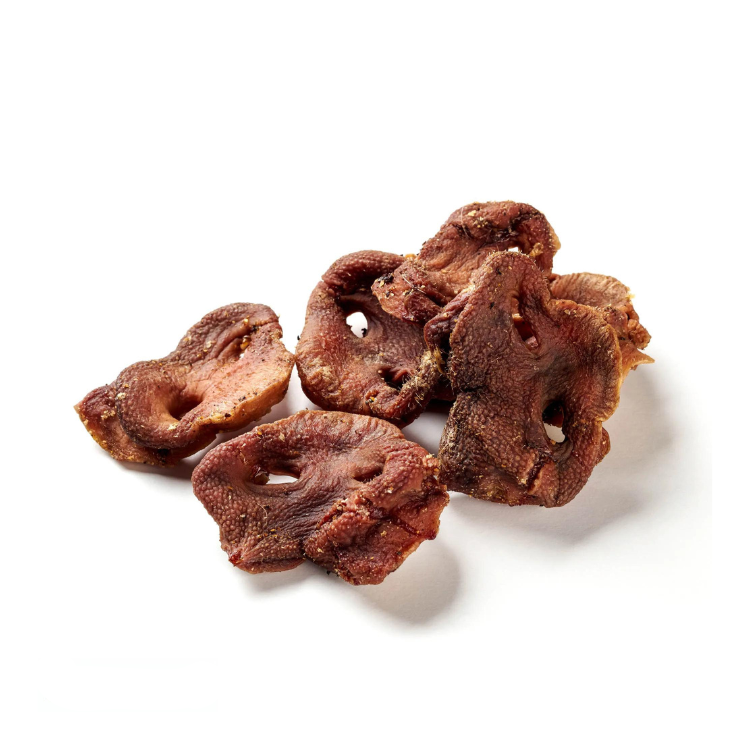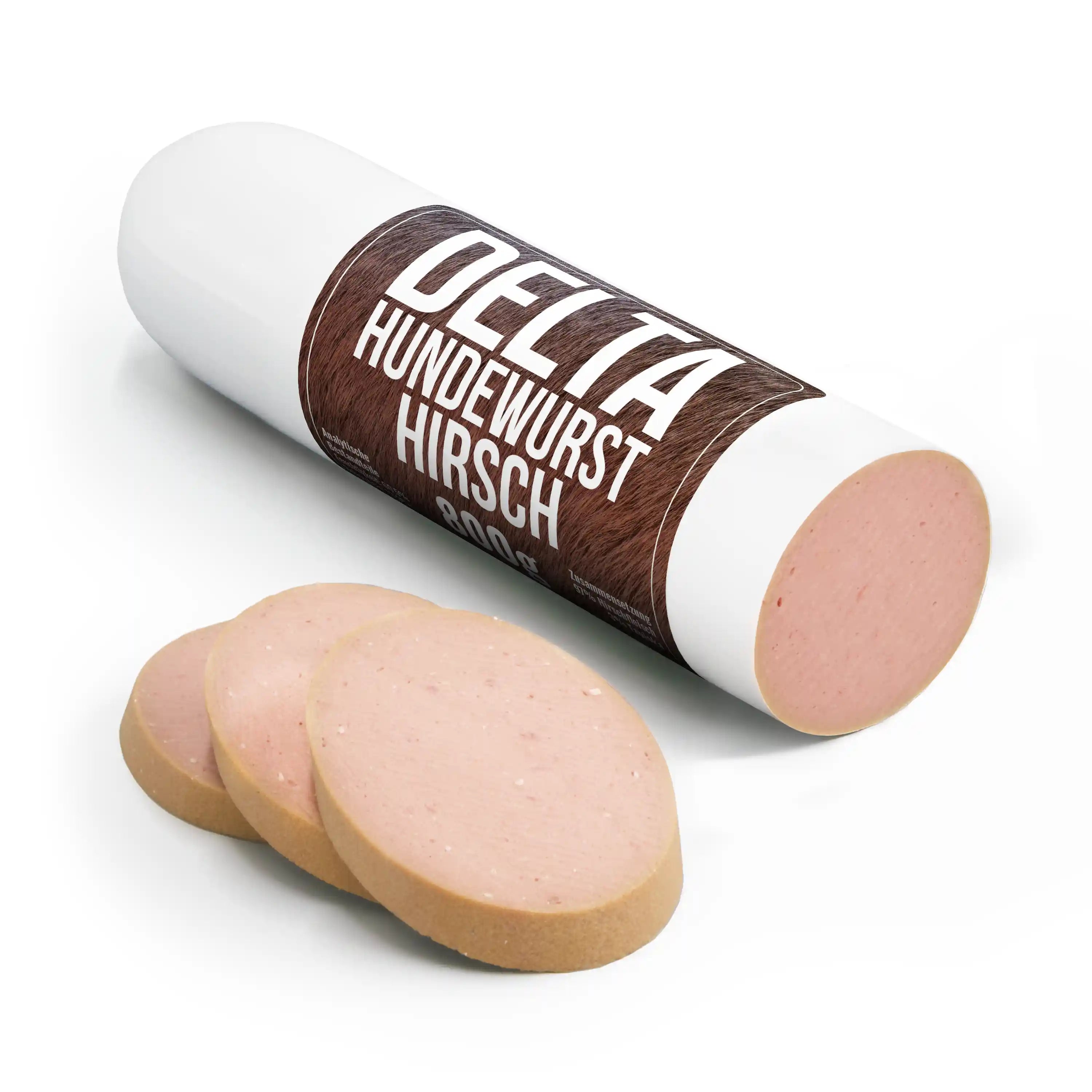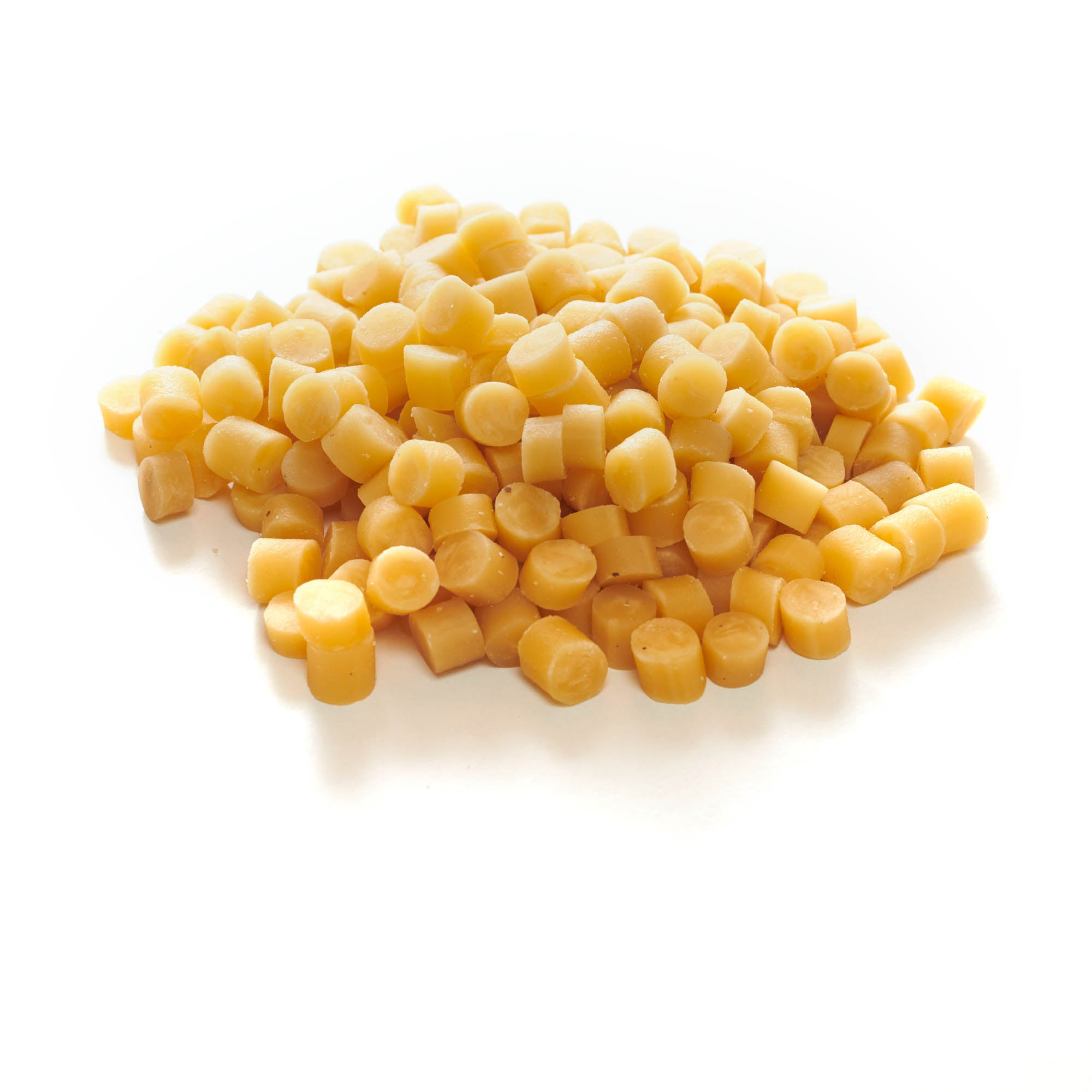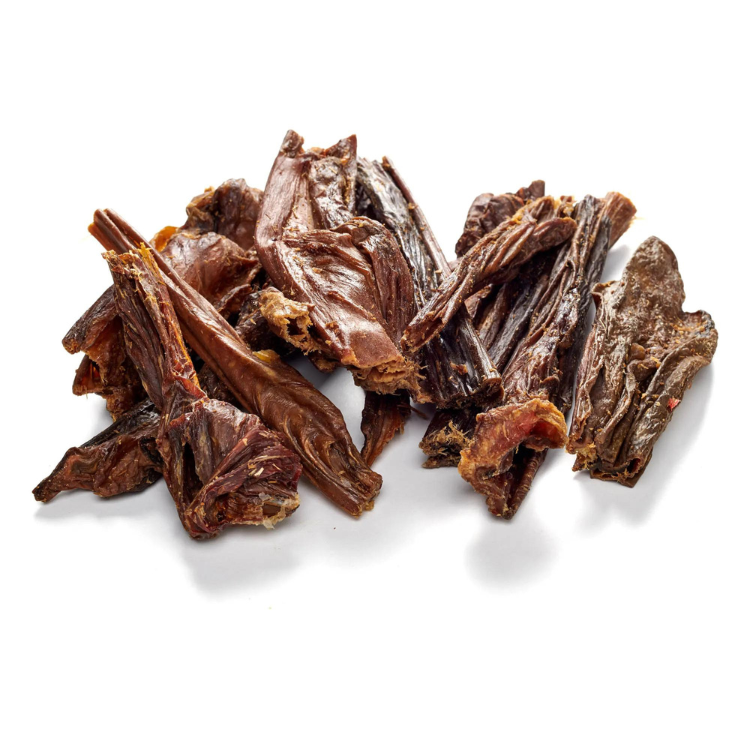
Elimination diet for dogs with allergies
Share
A leisurely walk through the park with your beloved four-legged friend, the sun is shining, and the world seems perfect - until your loyal companion suddenly starts scratching incessantly. What at first glance appears to be a harmless itch can be the first sign of a food allergy for many dog owners. An elimination diet could be the solution to give your dog a better quality of life and solve the mystery of the allergy.
Content: Elimination diet for dogs with allergies
- What is an elimination diet?
- Reasons for an elimination diet in dogs
- Carrying out an elimination diet
- Challenges and common mistakes
- Vegetarian dog food and chews as a safe alternative in the elimination diet
- Support from the veterinarian
- Conclusion
Food allergies in dogs are not an uncommon problem, and the symptoms can be as varied as the dogs themselves. From skin irritations to digestive problems - the symptoms can significantly affect the everyday life of the dog and also of the owner. But how do you find out which food is really causing the problem? The answer is a well-thought-out elimination diet.
Discover our selection of premium dog chews!
What is an elimination diet?
An elimination diet is one of the most effective methods to find out whether and to which foods a dog is allergic. It aims to eliminate potential allergens by making targeted changes to the diet and thus identify the cause of the allergic reactions.
Definition and goal
An elimination diet is a diagnostic procedure designed to identify food allergies. The basic idea is simple: you start with a diet that consists of a limited number of ingredients that the dog has never eaten before. These newly introduced ingredients - usually a protein source and a carbohydrate source - are chosen to minimize the likelihood of an allergic reaction. This targeted selection of foods is intended to bring the dog's allergic reaction under control.
The goal of the elimination diet is to identify the one food or ingredient that triggers the allergy . The dog's food is systematically changed and how the dog reacts to the different foods is observed. Once the allergy triggers have been identified, a suitable, long-term diet can be chosen that will free the dog from the unpleasant symptoms.
Difference to other diets
The elimination diet differs significantly from other types of diets that are often used to combat obesity in dogs or to improve general health. For example, while a low-calorie diet aims to reduce a dog's weight and a special diet for dogs with kidney disease aims to support organ function, the elimination diet is strictly diagnostic. It is not primarily about well-being or improving general health, but about the specific identification of triggers for allergic reactions.
While other diets are often designed for long-term use, the elimination diet is only a temporary measure used for diagnosis. After the diet is completed and the allergens are identified, the dog is switched back to a broader but adapted diet. This focused approach makes the elimination diet an indispensable tool in the diagnosis of food allergies.
Reasons for an elimination diet in dogs
There are many reasons why dog owners should consider putting their four-legged friends on an elimination diet. In addition to the obvious goal of providing relief from allergic symptoms, there are many other factors that may make such a diet necessary.
Frequency of food allergies in dogs
Food allergies are common in dogs, although they often go undetected. Studies show that up to 10% of the dog population suffers from some form of food allergy. Often it is certain proteins such as beef or chicken that cause problems. Grains such as wheat or corn can also cause allergic reactions.
It is important to understand that a food allergy does not necessarily appear immediately after consuming a particular food. It may also develop after repeated consumption as the dog's immune system becomes increasingly reactive to the allergen. Symptoms are often non-specific and can easily be confused with other health problems. This makes it all the more important to systematically and specifically identify which food is causing the allergy through an elimination diet.
Symptoms of a food allergy
The symptoms of a food allergy in dogs are varied and can affect both the skin and the digestive tract. The most common signs include:
- Skin problems: itching, redness, hair loss or even skin infections.
- Digestive problems: diarrhea, vomiting, flatulence or excessive stools.
- Behavioral changes: Dogs that suffer from constant itching may become irritable or even aggressive.
These symptoms can occur either individually or in combination and can significantly affect the dog's quality of life. In many dogs, the symptoms occur regardless of the season, suggesting that this is a food allergy and not an environmental allergy.
Carrying out an elimination diet
A successful elimination diet requires careful planning and monitoring and should only be carried out on the recommendation and under the supervision of a veterinarian. It is a process that requires patience and precision, but with the right approach and professional support, allergy triggers can be identified and the dog's health can be sustainably improved.
Choosing the right protein and carbohydrate sources
Choosing the right ingredients is the first and perhaps most important step in implementing an elimination diet. Since the goal is to avoid potential allergens, new, hypoallergenic protein and carbohydrate sources that the dog has never eaten before must be chosen. Examples of such protein sources are exotic meats such as kangaroo or venison , while potatoes or sweet potatoes are often used as carbohydrate sources.
It is important that only these selected ingredients are fed throughout the duration of the elimination diet. Any addition of treats , snacks or chews that are not explicitly part of the diet can jeopardize success and should be avoided.
Phases of the elimination diet
An elimination diet consists of two main phases: the elimination phase and the challenge phase. Each of these phases plays a crucial role in identifying food allergies.
Elimination phase
The elimination phase is the core of the diet. During this time, the dog is fed exclusively with the previously selected hypoallergenic ingredients. This phase usually lasts between 6 and 12 weeks. The goal is to reduce the symptoms of the allergy by completely eliminating the suspected allergens from the diet.
It is crucial to be absolutely consistent during this phase. Even small slip-ups, such as feeding a different treat, can skew results and prolong the process. Regular observation and recording of symptoms will help monitor progress and ensure the diet is effective.
Provocation phase
After the successful elimination phase, the provocation phase follows, in which the different foods are gradually reintroduced to find out which food triggers the allergic reaction. This is done systematically by adding a new ingredient every few days and observing whether the symptoms reappear.
During this phase, it is important to be patient and methodical. The introduction of new foods should be done slowly so as not to overwhelm the dog's body and to allow a clear identification of reactions.
Duration and monitoring of the diet
An elimination diet can last for several months, depending on the severity of the allergy and the dog's reaction. Regular veterinary examinations and close monitoring by the dog owner are necessary to ensure that the diet is effective and that the dog is receiving all the necessary nutrients. In addition to monitoring symptoms, the dog's general well-being should also be kept in mind. Weight loss, changes in energy levels, or other unusual signs may indicate that the diet needs to be adjusted.
Discover the range of dog snacks in our store!
Challenges and common mistakes
An elimination diet can be a big challenge, both for the dog and for the dog owner. There are some typical stumbling blocks that should be kept in mind to ensure the success of the diet.
Possible difficulties in implementation
The biggest challenge is often to follow the diet consistently and without exceptions. In everyday life, it can be difficult to keep the dog away from other food sources, especially if several people live in the household or the dog frequently comes into contact with other dogs. Many dog owners also find it difficult to do without treats or chews that are not part of the diet. However, in addition to hypoallergenic dog food , there are also hypoallergenic chews made from various types of meat such as ostrich , horse or rabbit that have been specially developed for dogs with allergies and can support the diet plan without the risk of an allergic reaction.
Dealing with deficiency symptoms
Another risk with a long-term elimination diet is the possible lack of important nutrients. Since the diet is limited to a few ingredients, there is a risk that the dog will not receive all the vitamins and minerals it needs. Close communication with the vet is essential here in order to supplement the diet with suitable nutritional supplements if necessary and to ensure that the dog stays healthy.
Sources of error and how to avoid them
A common mistake when carrying out an elimination diet is inaccurate or incomplete documentation of feeding and symptoms. To avoid errors, a detailed food diary should be kept in which every meal and every change in symptoms is recorded. This facilitates subsequent analysis and helps to reliably identify the cause of the allergy.
Another common mistake is introducing new foods too quickly during the provocation phase. Patience is key here - this is the only way to determine exactly which food is triggering the allergic reactions.
Vegetarian dog food and chews as a safe alternative in the elimination diet
During an elimination diet for dogs, it is crucial to choose the food and treats carefully to avoid possible allergens. An interesting option that is gaining popularity is vegetarian dog food . This food is based on plant-based ingredients and offers a hypoallergenic alternative to conventional dog food , which often contains animal proteins such as beef, chicken or lamb . Vegetarian dog food can be a useful addition to the diet, especially if animal proteins are suspected to be causing the allergy.
Vegetarian dog food provides all the essential nutrients dogs need while reducing the risk of allergic reactions. There are different varieties to suit the dog's needs - from easily digestible varieties for dogs with sensitive stomachs to options rich in omega-3 and omega-6 fatty acids to support skin and coat. These foods can provide a safe and healthy nutritional option both during the elimination diet and afterward.
Vegetarian and vegan chews
In addition to vegetarian dog food, the range of vegetarian and vegan chews offers a wide range of hypoallergenic treats that support the diet plan without the risk of an allergic reaction from animal proteins. These chews are not only safe for dogs with food allergies, but also a delicious and varied way to reward and keep the dog occupied.
Here are some of the most popular vegetarian and vegan chews:
- Softies Cheese Potato : Combining high-quality cheese powder with potato flour, these soft chews provide a nutritious treat that is easily digestible. They are ideal for dogs with sensitive stomachs and offer a delicious plant-based alternative that is both healthy and environmentally friendly.
- Softies Fruit Potato : These chews combine potato flour with natural fruit extracts such as pineapple and mango. They are an excellent choice for dogs who enjoy a fruity change in their diet and provide important vitamins and antioxidants that strengthen the immune system.
- Cheese sticks : These hard chews are made from pressed and dried milk protein. Their firm consistency contributes to dental health and offers long-lasting chewing fun. They are particularly suitable for sensitive dogs who need an allergen-free protein source.
- Freeze Dried Chews : Made through a special drying process that preserves the natural cheese flavor while ensuring a long shelf life, these chews offer a nutritious option that is both healthy and tasty.
- Training Snack Coconut : These small, easily digestible snacks are perfect for training or as a reward between meals. Made from natural coconut ingredients, they offer a healthy and delicious alternative to traditional treats and support digestive health and a shiny coat.
Support from the veterinarian
As already mentioned, an elimination diet should never be carried out without consulting a veterinarian . The support of a professional is crucial for the success of the diet and the health of the dog.
When should a veterinarian be consulted?
A veterinarian should be consulted at the first signs of a possible food allergy. He or she can assess the need for an elimination diet and help choose the appropriate ingredients and create the diet plan. Regular veterinary monitoring is also important during the diet to ensure that the dog remains healthy and that the diet is achieving the desired results.
Role of the veterinarian during the diet
The veterinarian plays a central role throughout the diet. Not only can he help choose the right foods, but he can also recommend supplements if deficiencies occur. The veterinarian will also monitor the dog's general health and adjust the diet plan if necessary. A good veterinarian will also assist in conducting the challenge phase and help interpret the results correctly.
Conclusion
An elimination diet is a powerful tool for diagnosing food allergies in dogs and giving them back the quality of life they deserve. Although it takes time and patience to implement, it is worth the effort to ensure the long-term health of your beloved four-legged friend.
With proper planning, consistent implementation, and veterinary support, an elimination diet can not only relieve the symptoms of an allergy, but also help to accurately identify the cause and develop a customized, allergen-free diet.
Reward your best friend with our dog treats!

